When you're navigating the world of contractor work, staying on top of payments is crucial for both maintaining relationships and ensuring smooth project progress. A well-crafted payment request letter not only communicates your needs but also reflects professionalism and attention to detail. Whether you're working on a renovation or a new build, clarity in your payment terms can help avoid miscommunication. Ready to learn how to create the perfect payment request letter? Let's dive in!
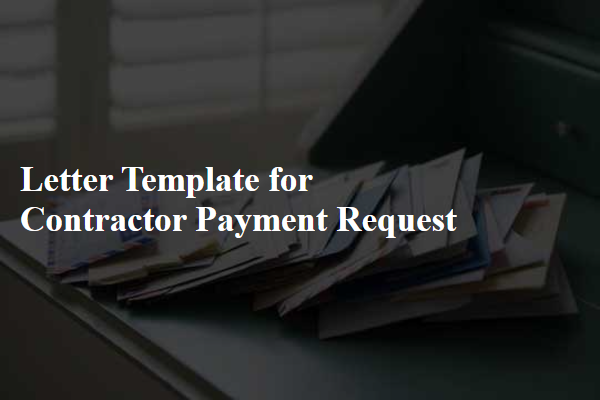
Clear invoice number
A clear invoice number is essential for organizing contractor payment requests, allowing for efficient tracking and reference by both contractors and clients. Each invoice number should be unique, typically composed of a combination of the year, month, and a sequential number (e.g., 2023-09-001), ensuring easy identification. This unique identifier streamlines the payment process, facilitating timely payments and minimizing disputes regarding payment status. Accurate reference to specific projects, including job site locations or project codes, further enhances clarity. Invoices should be sent electronically or through established channels preferred by clients, maintaining proper documentation for financial audits and regulatory compliance.
Detailed project description
Contractor payment requests must include a detailed project description to ensure transparency and accuracy. The description should encompass essential project details, such as the project name, location (e.g., 123 Main St, Springfield), project timeline (start date: January 5, 2023; expected completion date: March 30, 2023), and a summary of the work completed. Highlighting deliverables, such as installation of plumbing fixtures (number of fixtures: 15), electrical wiring completion (total length: 500 feet), and site preparation activities (total area: 2,000 square feet), is crucial. Including the invoice amount requested, breakdown of labor costs, material expenses, and any change orders (with reference numbers, if applicable) fosters a comprehensive understanding of the payment request. Documenting the progress against project milestones (e.g., foundation laid by January 20, framing completed by February 15) ensures accountability. Properly detailing this information aids in the smooth processing of payments and establishes clear communication between contractors and clients.
Payment terms and conditions
Contractor payment requests typically involve specific terms and conditions outlined in the contract. Clear payment terms, including due dates, payment methods, and penalties for late payments, are essential. For example, payments may be requested on a bi-weekly basis, following the completion of predetermined milestones, such as project phases or deliverables, with a specified duration for invoice processing (e.g., 30 days from receipt of invoice). Additionally, terms may stipulate a charge for late payments, often expressed as a percentage, such as 1.5% per month. Clear communication of payment conditions helps avoid disputes and ensures timely compensation for services rendered, fostering a professional relationship between the contractor and the client.
Payment due date
Contractor payment requests often include critical details regarding the payment due date, setting clear expectations for financial transactions. For instance, the agreed-upon payment due date might be specified as November 15, 2023, as per the signed contract establishing project milestones and deliverables. Timely payments are essential for maintaining healthy cash flow, especially in construction projects where subcontractors and suppliers rely on these payments to continue operations. Detailed invoices should outline the specific payment periods, including any late fees that may accrue after the due date, which could be 1.5% per month, ensuring accountability on both ends. By adhering to these financial timelines, contractors ensure that project momentum is preserved, reflecting professionalism and reliability.
Contact information
A contractor payment request should include essential contact information to ensure proper communication and processing. The request should feature the contractor's name, business name, and address for clarity. Include phone numbers to facilitate direct communication, enabling prompt responses to any queries regarding the payment. Email addresses are also crucial for sending digital copies of invoices and related documents. Additionally, mention the project name and location to specify which job the payment is associated with, ensuring all parties are aligned on the details. Providing payment instructions, including preferred payment methods and bank transfer details, can streamline the payment process significantly.

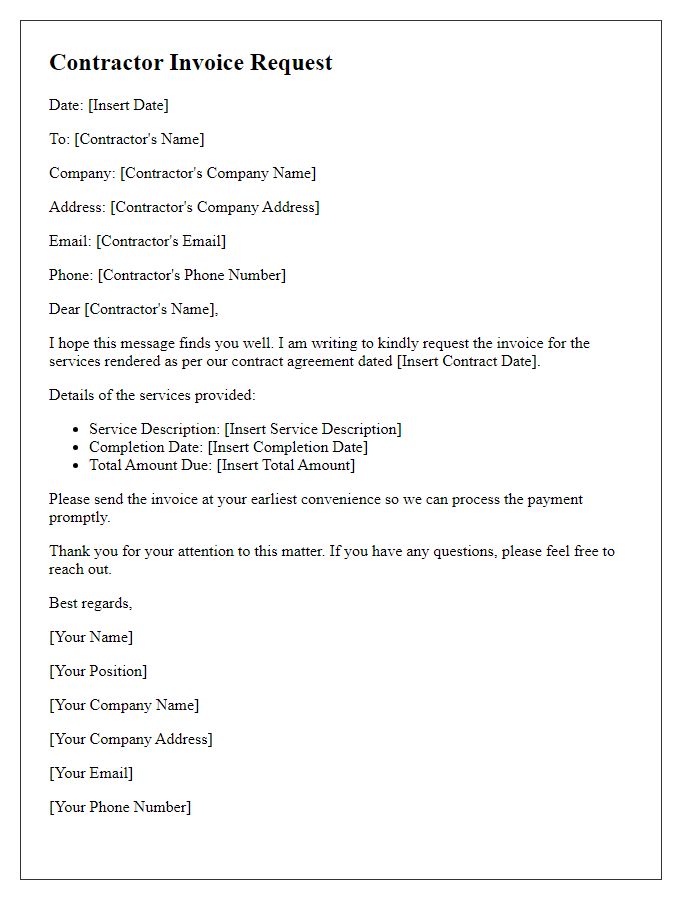
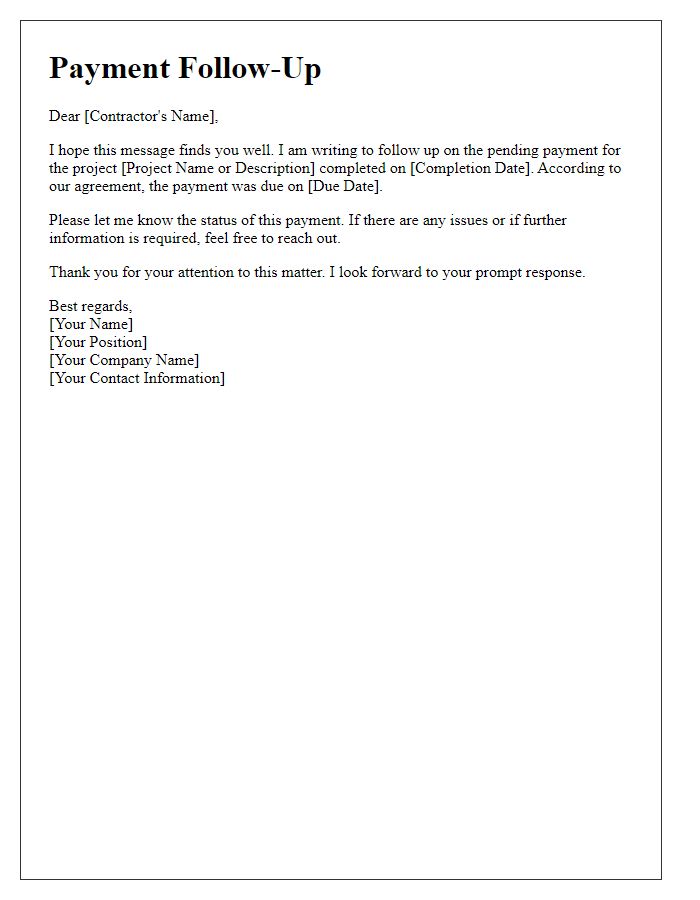
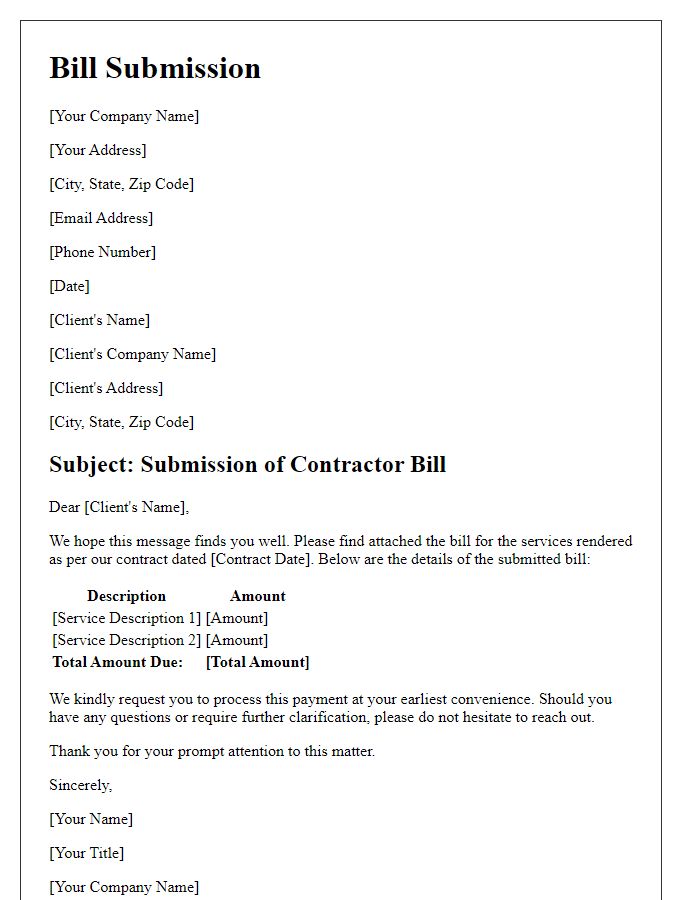
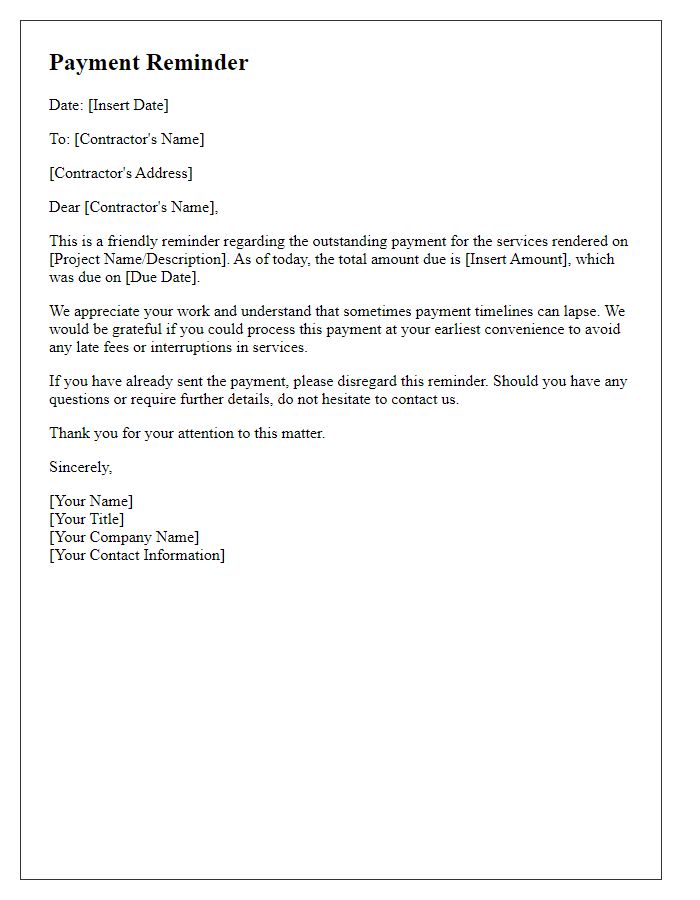
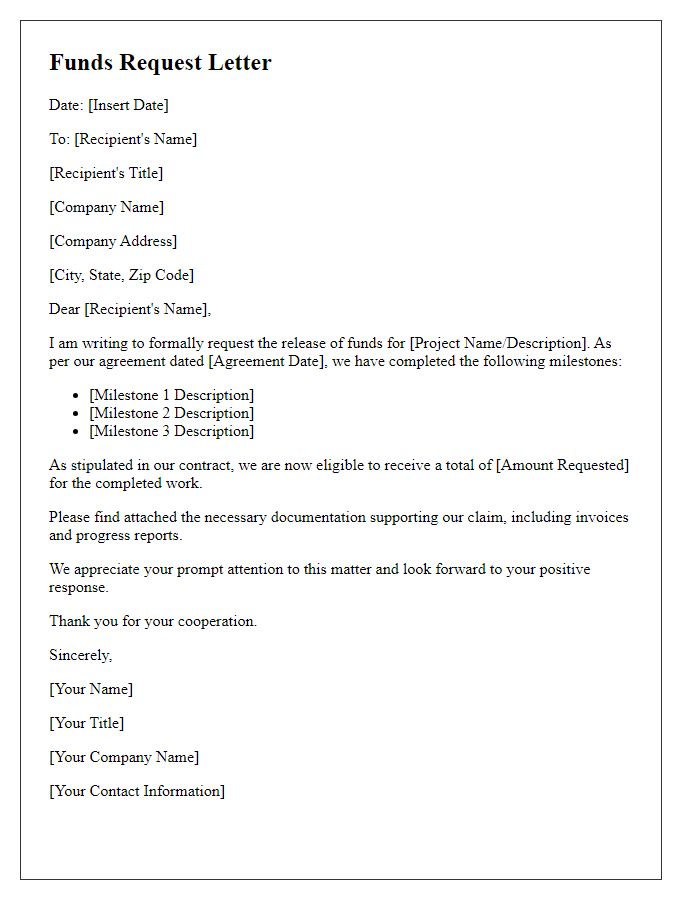
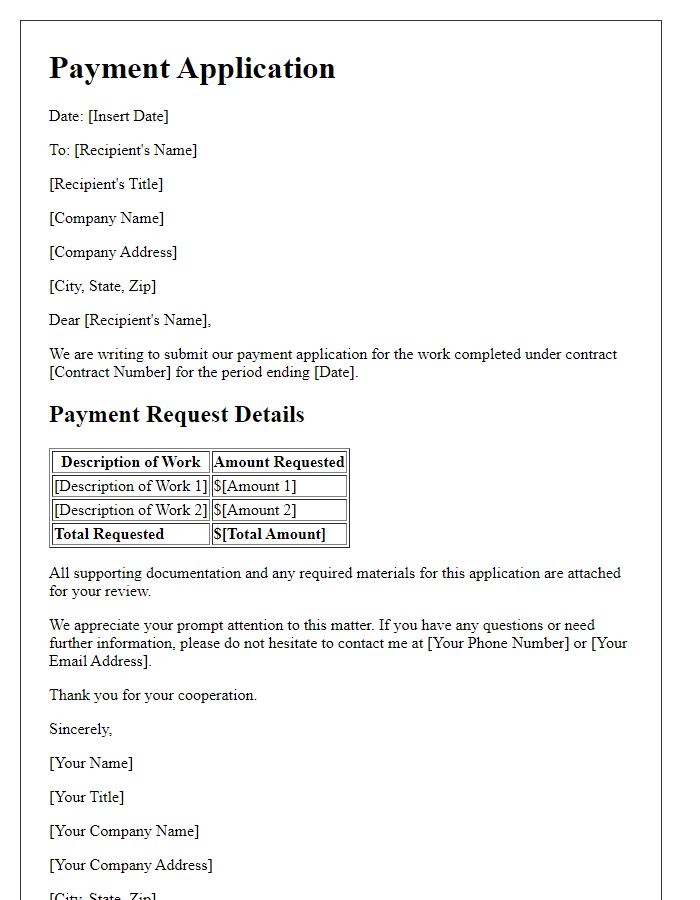
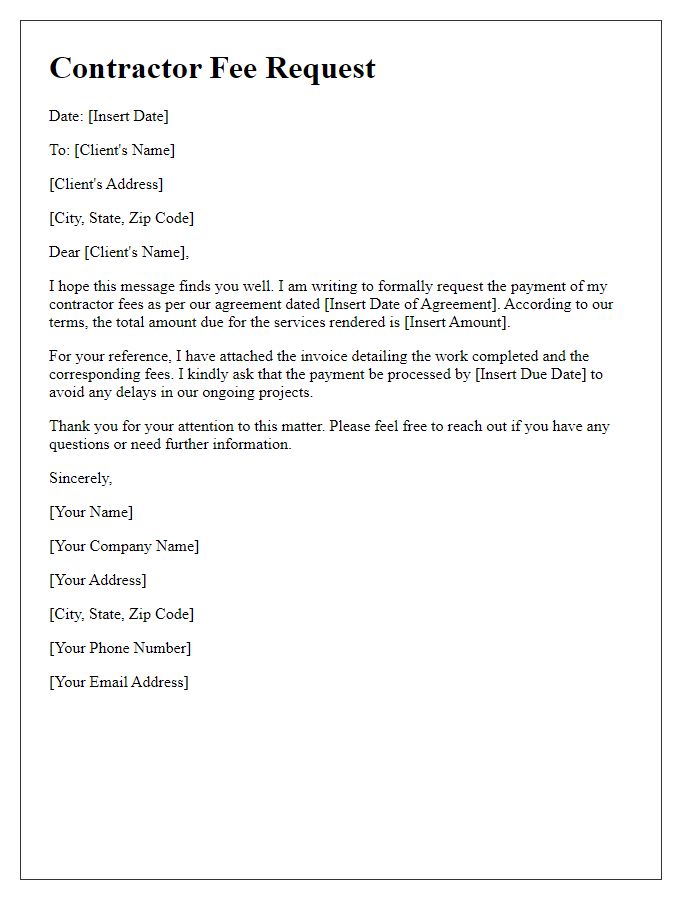
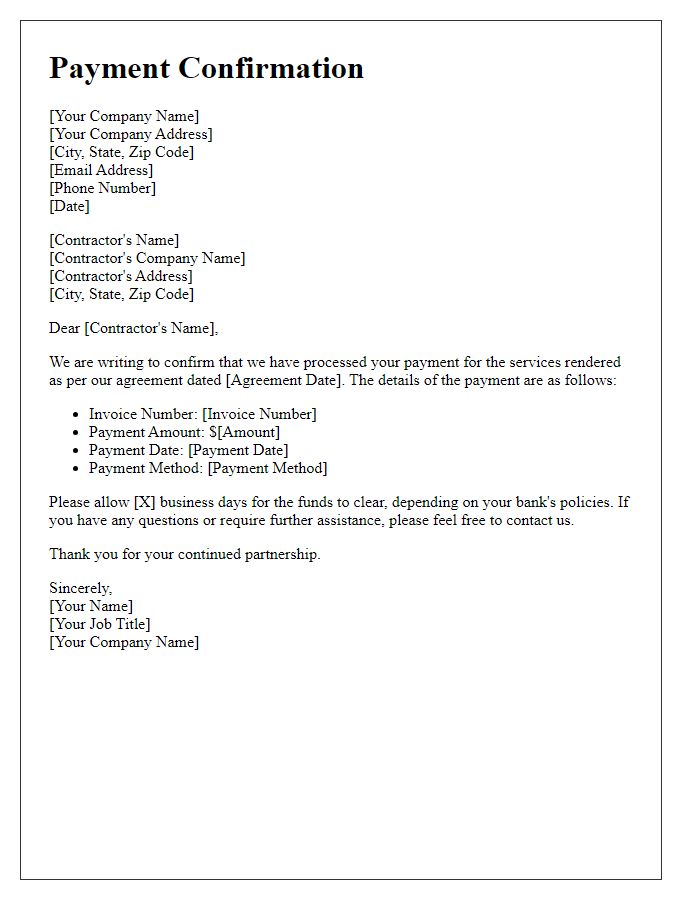
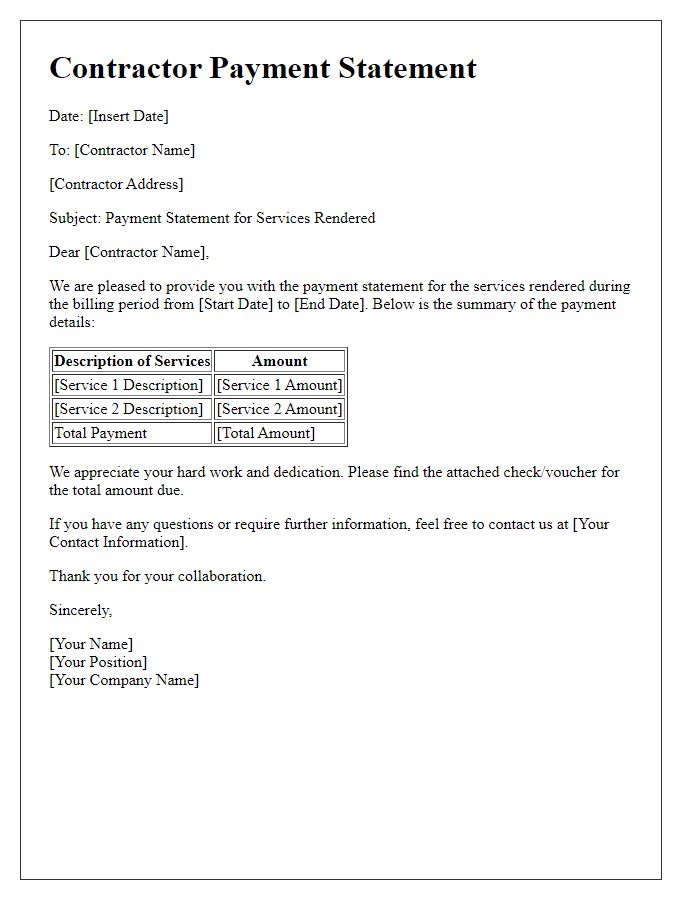
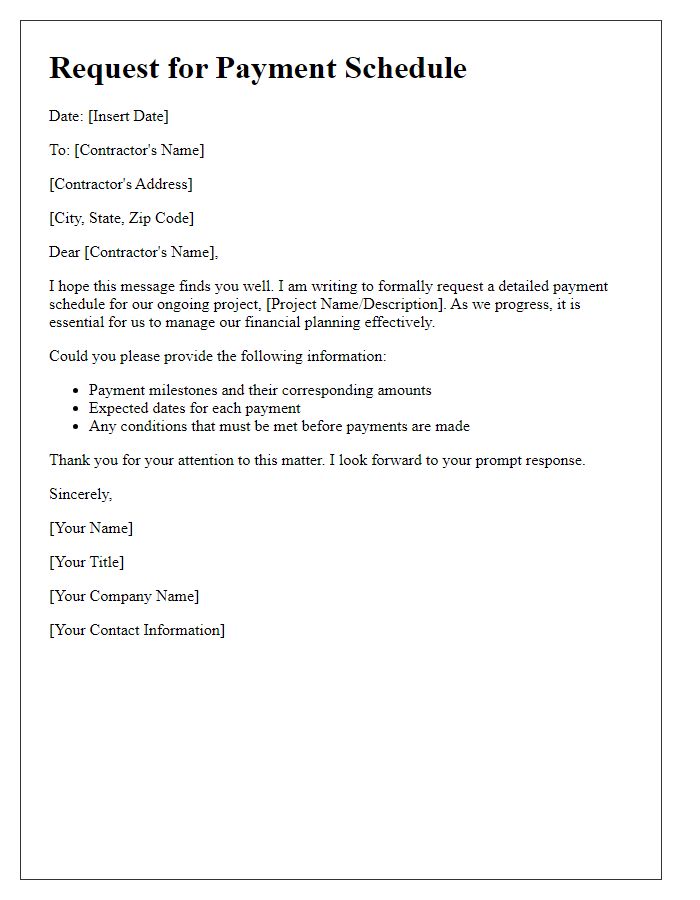

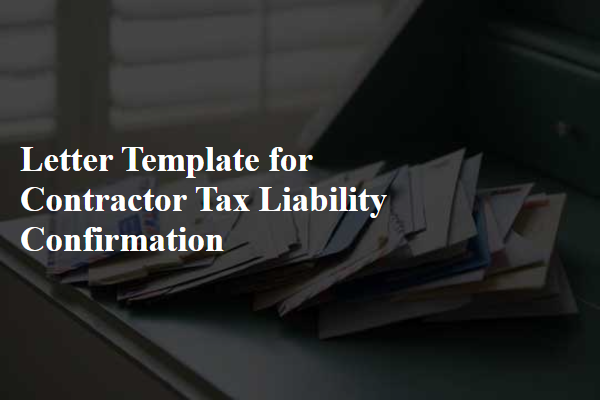
Comments